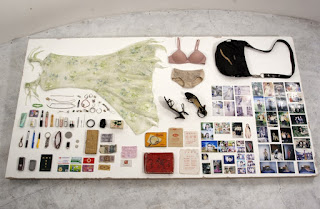Objects and identity
Objects
have a very significant place in psychology. From early childhood on, one
starts to identify with objects and form bonds. The wide known example of this
is the transitional object or comfort object introduced by Donald
Winnicott. This object, usually a
blanket, becomes a substitute for the early mother-child connection and serves
as a comforting item. The child uses the object during its transitional period
from the psychic reality to the external reality in which it grasps the separation
between itself and the external world.
In
adolescence, ownership and accumulation of objects is established. Adolescence
is a phase in which one’s identity is shaping and one’s life transitioning.
During this period, dependence on personal objects peaks. The reminding and
reminiscing aspects of objects are amplified due to the need for affirming one’s
life-story and past. Objects help construct a narrative and reassure one’s
identity and autobiography by reminding the person of past events and significant people in their lives. These factors support the idea that personal objects become more
significant during such transition periods and at old age.*
Contrary
to keeping and caring for objects, the act of getting rid of them is also
significant in psychology. Although the notion of decluttering is reinforced as an antidote to hoarding, the urge to
throw personal objects away is also rooted in the complicated and strong
relationship people have with their objects; much like collecting or hoarding.
Throwing things away is an attempt at a rejection of the dependency on objects;
while keeping them is to accept this dependency and to immerse in it.
Taking
personal objects and using them in artwork is also a way of dealing with
objects and one’s relationship with them. To transform these objects into
artwork and to offer them as display
-even when they are someone else’s things- is the artist’s way of
responding to the bond people have with objects.
Sources
*Habermas, T., & Paha, C. (2002.). Souvenirs and other
personal objects: Reminding of past events and significant others in the
transition to university. In J. D. Webster & B. K. Haight (Eds.), Critical
Advances in Reminiscence Work (p.123-138). New York: Springer.






